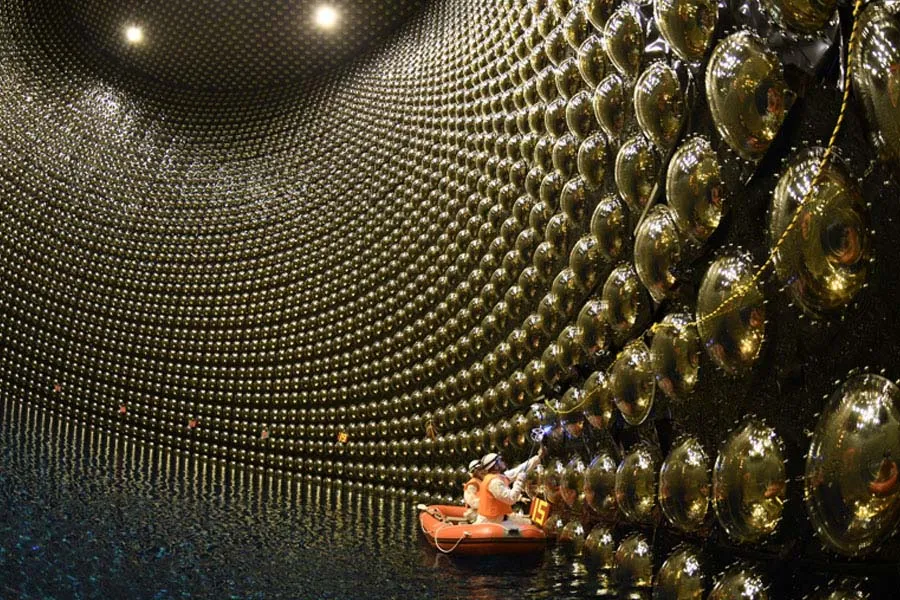The School of Engineering and Sciences (EIC) at Tecnológico de Monterrey is collaborating on a project that, by 2027, will be the largest neutrino observatory ever built.
This is the Hyper Kamiokande, a colossal underground structure whose predecessors (Kamiokande and Super Kamiokande) have had a huge impact on Physics and have been awarded two Nobel Prizes.
Alejandro Kadsumi Tomatani, EIC professor at the Tec’s Guadalajara campus, explained that it is only the third detector of “Cherenkov radiation”.
It is in construction, inside the Tochibora mine, eight kilometers from the Kamioka Observatory in Japan.

Both the Hyper Kamiokande and its predecessors are capable of detecting neutrinos which mainly come from the atmosphere, the sun, and supernova explosions in any part of the galaxy.
Kadsumi Tomatani noted that neutrinos are elemental particles capable of passing through any type of matter, so they are very difficult to detect, to the extent of being considered “ghost particles”.
The principle of the Hyper Kamiokande is very similar to that of its predecessors: a gigantic drum-shaped container flooded with ultra-pure water, buried deep in the earth and equipped with thousands of light sensors.
However, this time the size and volume of the container are considerably larger (five times larger than the Super Kamiokande), with a structure up to 78 meters high by 74 meters wide.

The physicist from the Tehttps://tec.mx/enc’s Guadalajara campus shared that this structure is capable of storing more than 260,000 tons of water and will be equipped with 40,000 photomultiplier tube (PMT) photosensors; the cost of construction will be around 600 million euros.
“Being buried 650 meters underground, the rock above serves as a filter that removes polluting particles, which allows us to detect only neutrinos,” said the professor.
The detection of cosmic neutrinos, for which Professor Masatoshi Koshiba was awarded the Nobel Prize in Physics in 2002, was made possible thanks to the Kamiokande project.
Later, in 2015, Professor Takaaki Kajita and Professor Arthur B. MacDonald were awarded the Nobel Prize in Physics for discovering that neutrinos have mass, through quantum oscillations measured in the Super Kamiokande.
With the Hyper Kamiokande, the ambitions go further, since scientists want to use this project to solve a fundamental physics problem related to the violation of charge-parity (CP) symmetry.
“Through observation the universe, we can see that there is more matter than antimatter in it. This is one of the great mysteries of physics,” said Professor Alejandro Kadsumi.
How will the Tec collaborate in the Hyper Kamiokande project?
Tecnológico de Monterrey is one of three educational institutions in Mexico which will collaborate in the Hyper Kamiokande project when the collaboration has been formalized.
In total, there are 79 institutions around the world, from 13 different countries, which are contributing to the overall project in some way.
Alejandro Kadsumi Tomatani, the physicist from the School of Engineering and Sciences, and his team will work on the software aspect of the project and will make use of the technological capabilities of a “super computer” located on the Guadalajara campus.
“We’re trying to understand one of the greatest mysteries in physics.”

The “NVIDIA-DGX-1” is capable of distinguishing neutrinos by using “machine learning”, a branch of artificial intelligence whose objective is to develop algorithms to train a computer so that it can identify certain patterns in pictures.
According to the professor at the Tec’s Guadalajara campus, it is the first machine specialized in data processing and deep learning to be acquired by a Latin American university.
“The computer allows us to classify neutrinos by the “flavor” of their properties,” explained Alejandro Kadsumi.
With the information generated by the computer, it will be possible to predict potential scenarios which can be shared with different areas of the Hyper Kamiokande project, led by Professor Masato Shiozawa and researcher Francesca Di Lodovico.
YOU’LL DEFINITELY WANT TO READ THIS TOO:





